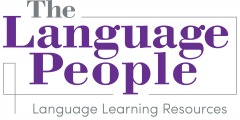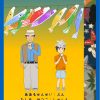Japan Books: Children’s Day Level 5
$14.95
Mariko Earle
Publisher: Earle Sensei’s Japan Books
ISBN: 9781925808070
Format: Paperback | 21 pp.
Description
Richy and his grandpa will show you how Japanese people celebrate Children’s Day in Japan.
Level: Main text – Level 5; Captions – Level 8
Script: Hiragana, Katakana and Kanji characters with Furigana
Sentence examples:
- They wear samurai kimono.
- Well, let us celebrate Children’s Day.
- I want to be as strong as the samurai.
Main text: In alignment with the Australian curriculum (Years 7 to 8 band plan achievement standards)
- Use verbs to plan and offer suggestions.
- Read and write using high-frequency kanji for verbs.
- Build cohesion in texts and elaborate on the meanings using grammatical elements, such as conjunctions.
Captions: In alignment with the Senior Japanese syllabus and the Japanese Language Proficiency Test (JLPT)
- Plain form verbs, including past tense and negative forms
- stem V: purpose (N5)
- N: describing (N4)
- Connect sentences (N5)
- V: favors/giving/receiving (N4)
- V: conditional if/when (N4)
- V: even though (N4)
- Plain V + N: N that V (N3)
- Plain V: to wish (N4)
- In this way/just like this (N2)
Cultural note from the author:
Every year, children in Japan look forward to the 5th of May, which is Children’s Day. This day signifies good health and wishes for a good future for the children. It was originally held for boys only. However, in 1948, this day was registered as a national holiday and became a special day for both boys and girls. Therefore, the traditional celebrative ways that are introduced in this book mostly comprise boy-related themes. While some of the traditional practices have been simplified for the modern era, many families still practice these traditional methods.




